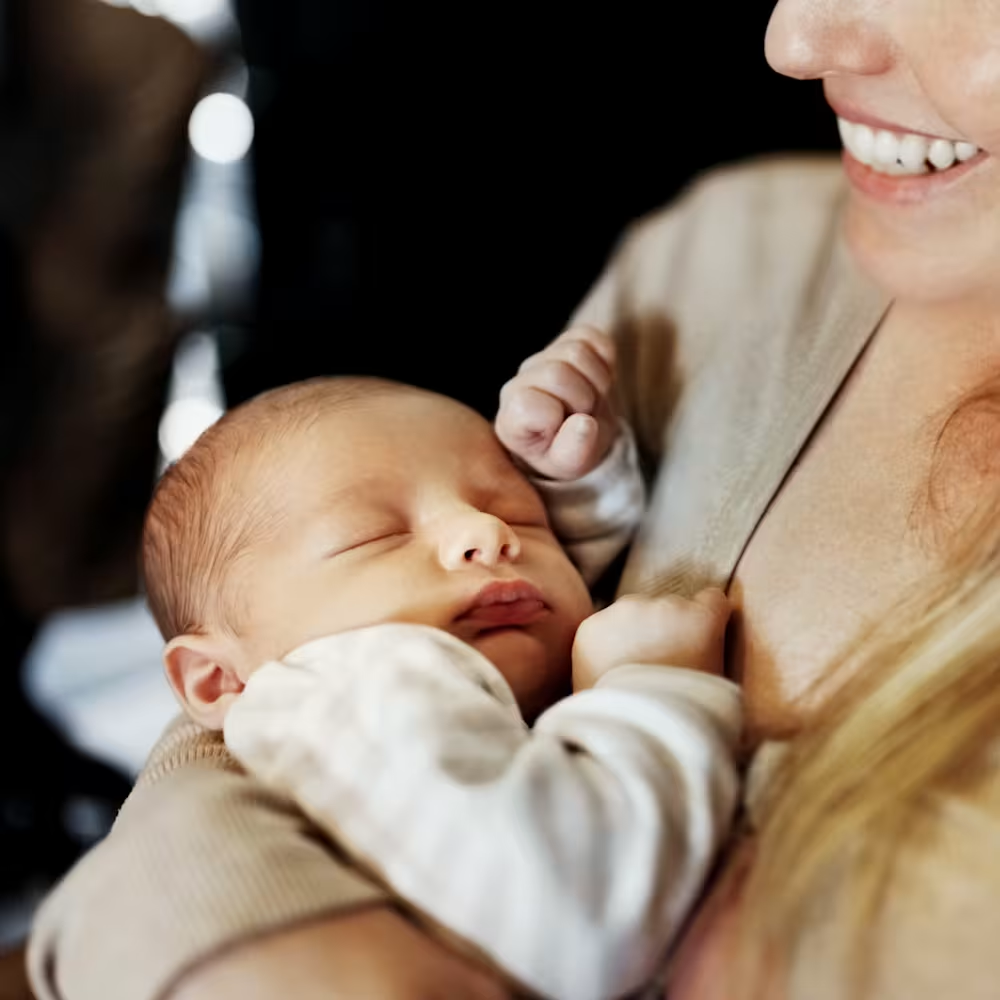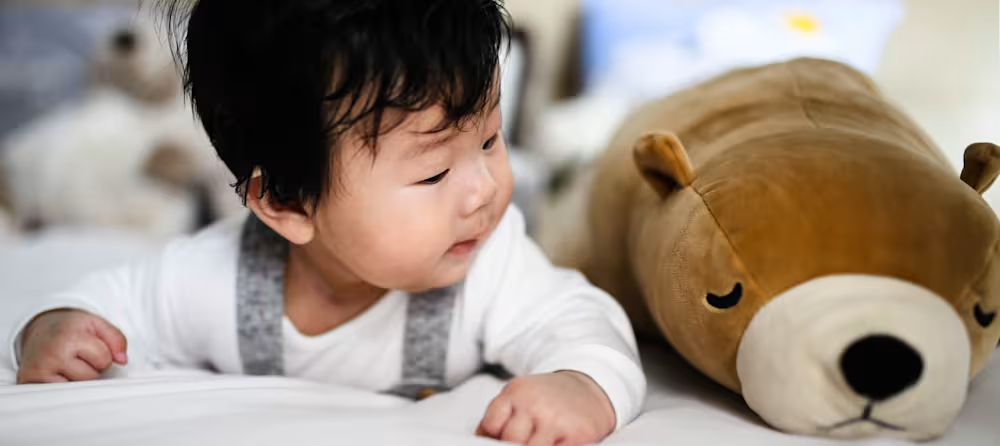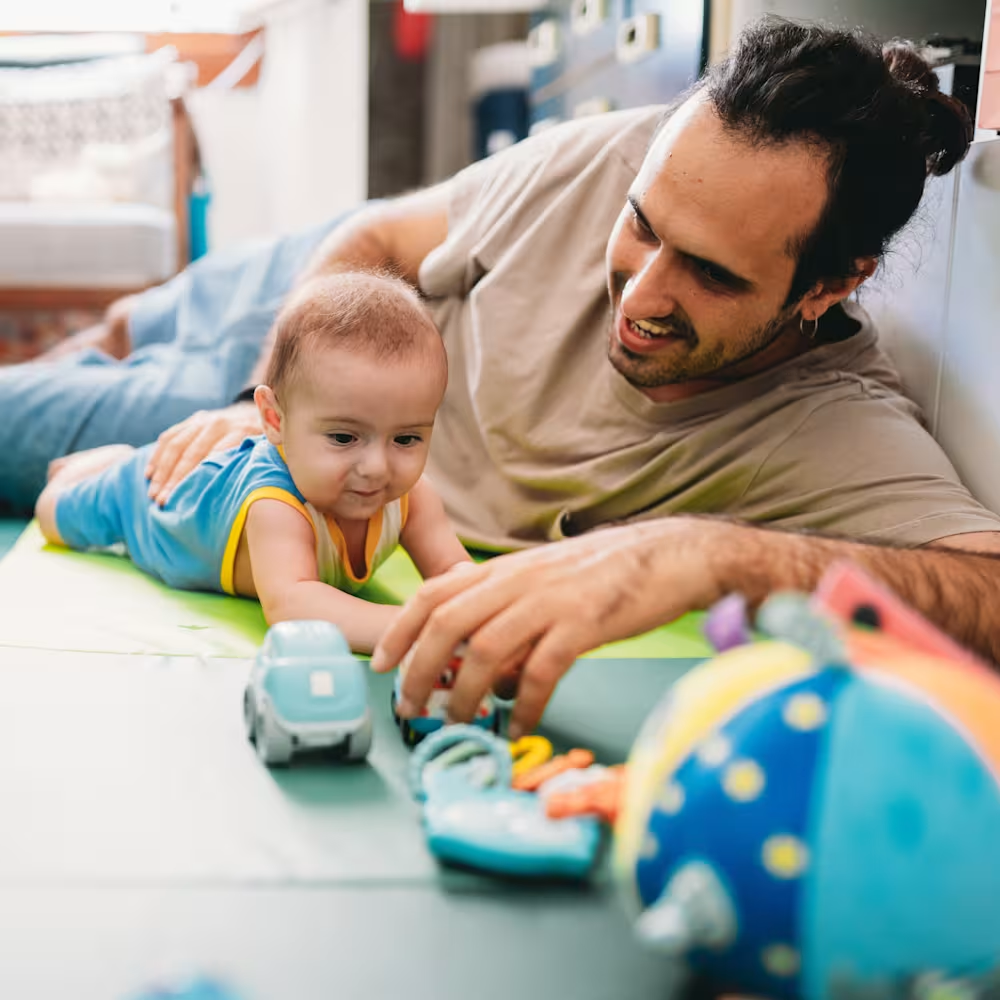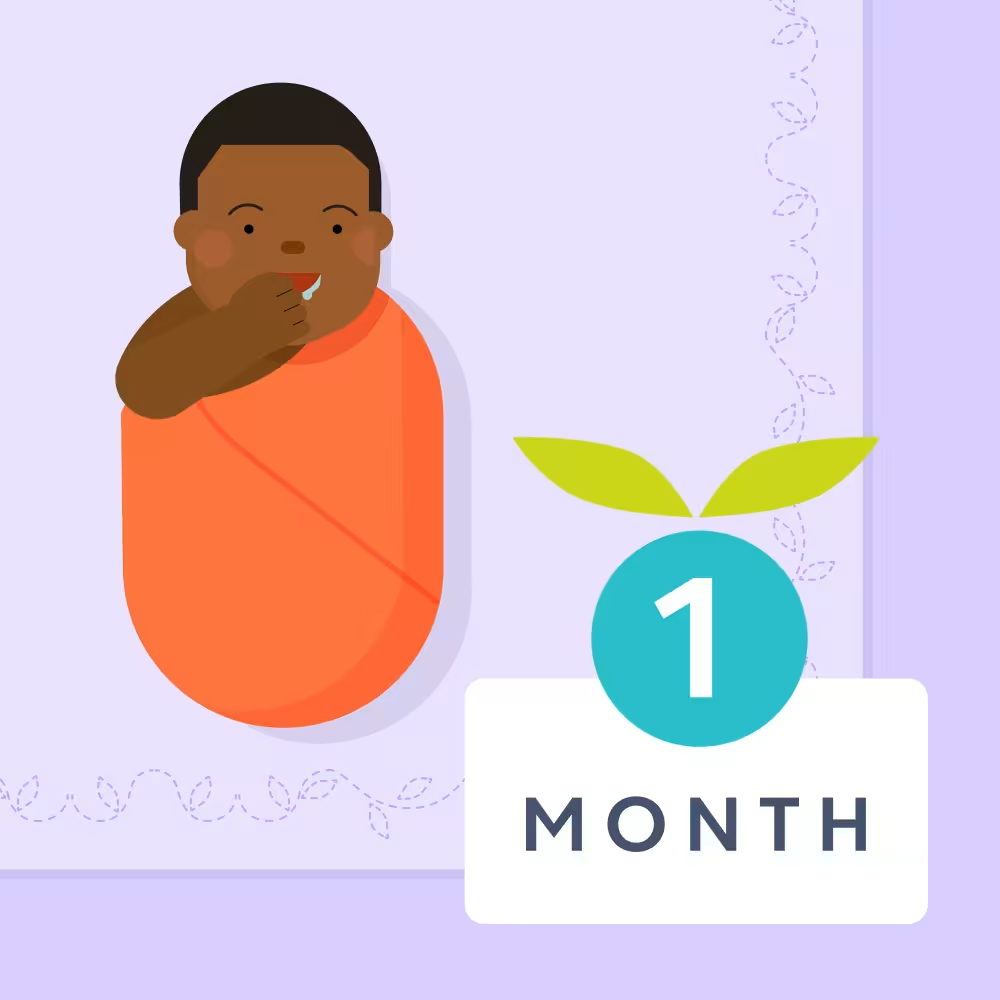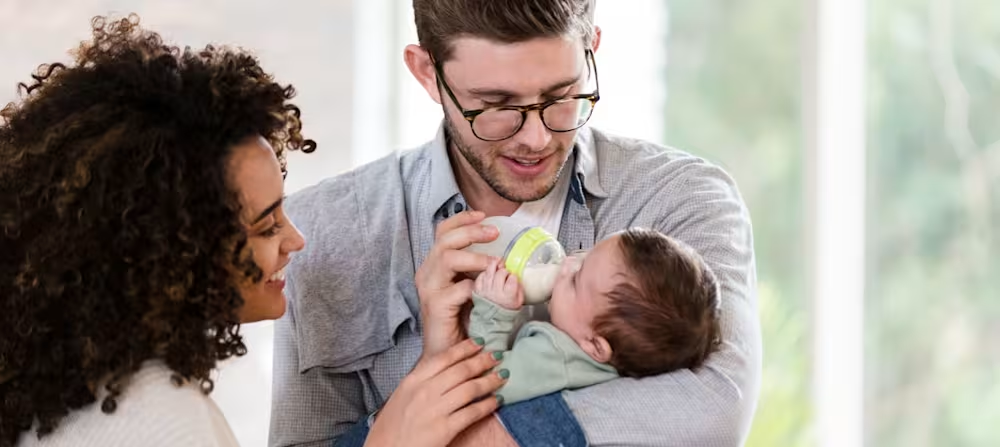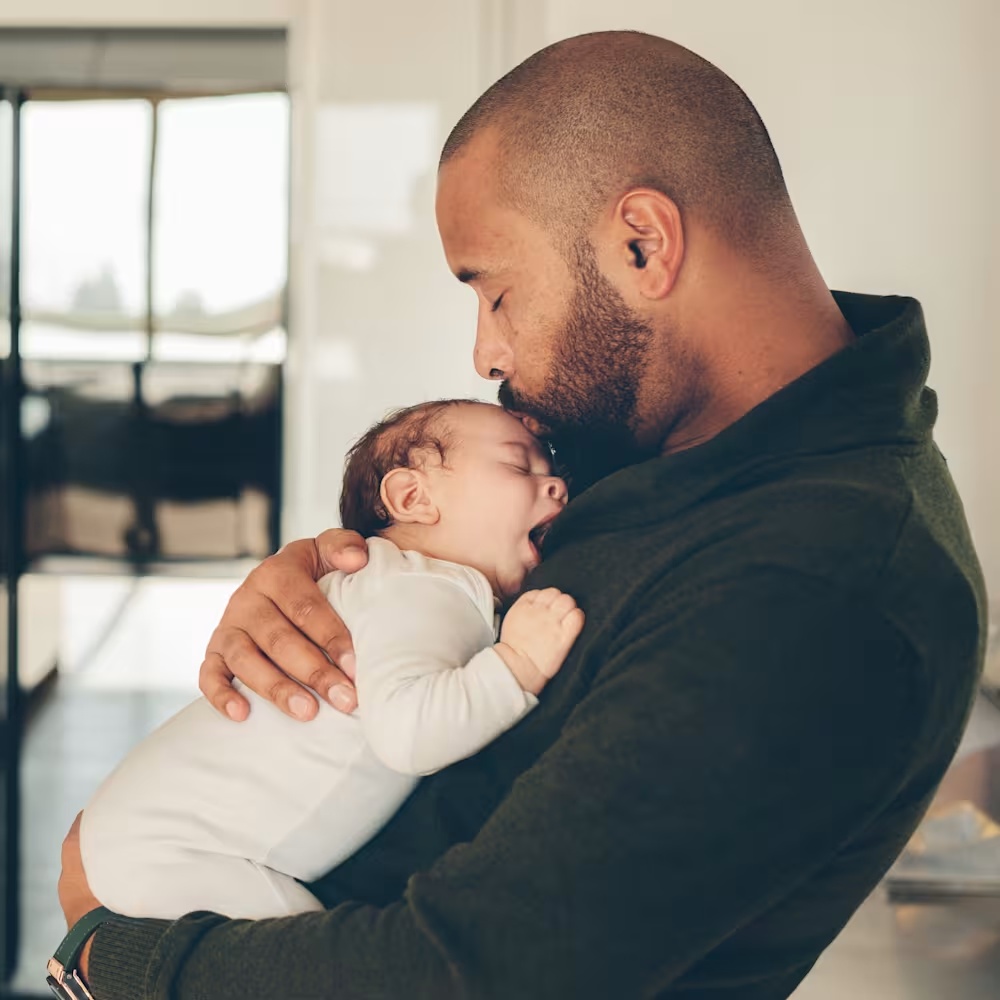Why do babies move so much in their sleep? Newborn active sleep, explained
Updated Oct 22, 2025
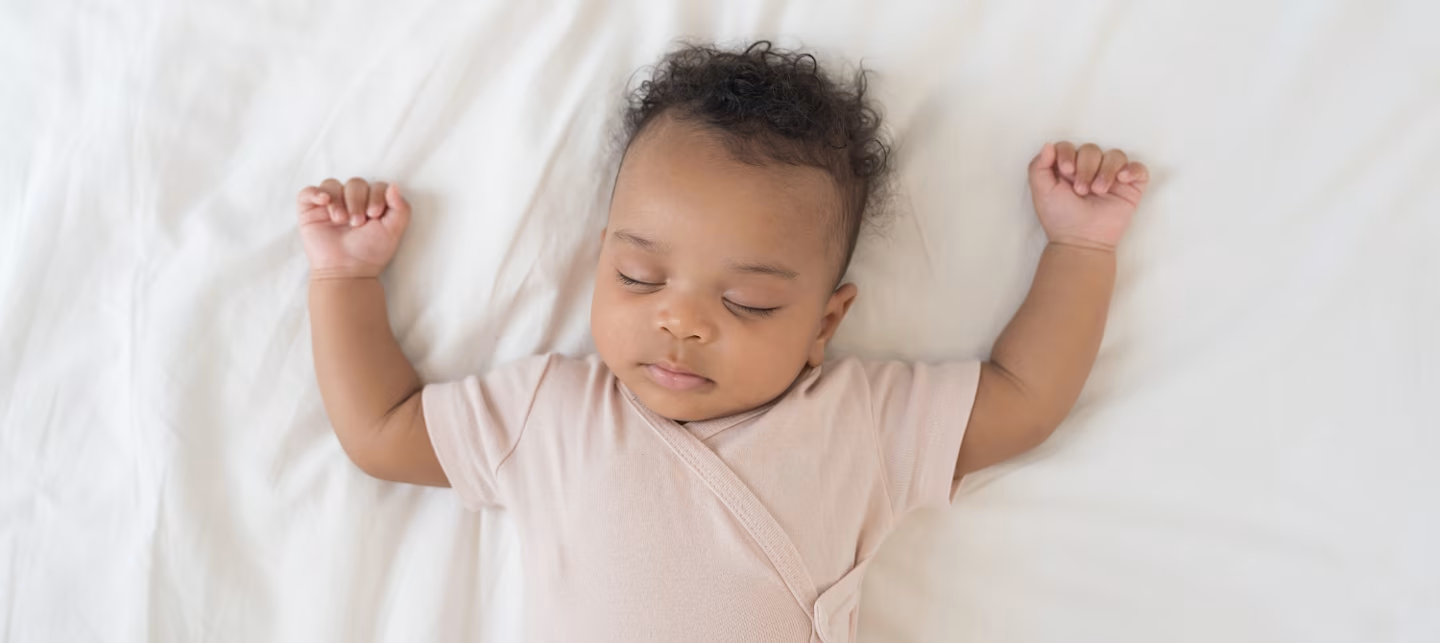
Newborn sleep can look anything but peaceful with so much squirming, jerking, eye rolling, rapid breathing, even or squeaks. Don’t worry, your baby isn’t practicing for a midnight dance party. Most of this activity happens during active sleep, a normal stage of newborn sleep. All those quirky movements you’re seeing are often a part of healthy development — understanding what’s behind them can help you relax alongside your baby.
Table of Contents
What is active sleep in newborns?
Active sleep, or REM sleep, is a normal phase of the newborn sleep cycle []. During this stage, your baby’s brain is busy making connections that support learning, memory, and overall development []. You may notice your baby squirming, , rolling their eyes, breathing more rapidly, and making noises during active sleep, all of which are connected to crucial brain-body development.
Most babies spend about half of their total sleep in active sleep until they’re about 3 months old []. That’s why it can seem like your baby moves a lot in sleep compared to older kids and adults.
Common active sleep behaviors in newborns
If your baby moves a lot in their sleep and can be woken easily, chances are you’re watching active sleep in action []. These odd sleep movements may look dramatic, but they’re a healthy part of newborn sleep patterns and development. Here’s what you might notice:
Squirming: Constant wiggles, stretches, or kicks are the hallmark of newborn active sleep.
Rapid breathing: Quick, uneven breaths are very common and usually nothing to worry about.
Eye rolling and fluttering: Eyes moving under the lids (sometimes resembling eye rolling) are a typical feature of this stage.
Jerks and jumps: Sudden movements can make it seem like your newborn is jumping or jerking in their sleep.
Making noises: Grunts, squeaks, laughs, and cries can occur during active sleep.
Facial expressions: , grimaces, or tiny frowns show how busy their brain is, even in dreamland.
How long does active sleep last in babies?
Newborns spend a surprising amount of their shut-eye in active sleep, which steadily balances out over their first year of life. Here’s what to know about timing:
Active sleep cycles are short: A newborn's active sleep cycle typically lasts about 50 - 60 minutes [].
Lots of active sleep in the early months: Newborns can spend up to 50% of their sleep time in active sleep [].
It decreases with age: As babies grow, the amount of active sleep gradually decreases to longer periods of quiet sleep and deeper, more adult-like sleep stages [].
Every baby is unique: Some babies move a lot during active sleep, while others may not. Both are healthy variations in how babies sleep and develop.
Why do babies move and squirm during sleep?
All that wiggling, twitching, and eye rolling during newborn active sleep serves a purpose. And while it might look restless, baby movement in sleep is a common (and healthy!) part of development. Here’s what’s going on behind the scenes:
Brain development: Active sleep is when your baby’s brain is busy forming new connections that support learning, memory, and growth. Movement is part of this developmental “workout.” []
: Tiny jerks and jumps are sometimes linked to the Moro or “startle” reflex, muscle activity that helps your baby’s nervous system learn how to coordinate movement [].
Immature sleep cycles: Newborn sleep patterns are shorter and lighter than those of adults, so babies naturally may move around and wake more easily during active sleep ]
Practice for milestones: Those little squirms and stretches are like rehearsals for big skills down the road [] —those little nighttime movements help lay the groundwork for motor development.
Is it normal for newborns to have their eyes open while sleeping?
Seeing your baby sleep with eyes open (or partly open) can be surprising — and maybe a little unsettling! However, a newborn sleeping with their eyes open is usually just another quirk of active sleep. Here’s what to know:
It’s usually normal: As long as your baby can close their eyes normally when awake, is visually alert and does not have dry, irritated, or red eyes, this is unlikely to be a concern [].
Often linked to active sleep: Eye rolling, fluttering, or partly open eyes are common during this stage of the newborn sleep cycle.
When to check in with your pediatrician: If your baby’s eyes stay wide open during sleep for long stretches, or you notice unusual movements along with it, it’s worth mentioning at your next visit [].
When to talk to your pediatrician about sleep movements
Most twitching, squirming, and jerking during newborn active sleep is not a cause for concern, especially if it stops as soon as your baby wakes up. But if something feels off, or the movements seem more intense, repetitive, or unusual, check in with your pediatrician for peace of mind.
If you’re concerned, try to take a short video of what you’re seeing. This helps your pediatrician review the movements and decide whether further evaluation is needed. And remember: Trust your intuition — it’s always OK to reach out for help!
When to seek help
Call your pediatrician if you notice:
Twitching that continues when your baby is awake (outside of the Moro reflex) [7]
Repetitive or rhythmic jerking, especially on one side of the body [10]
Movements that don’t stop when you gently reposition or touch your baby [11]
Signs of stiffening, unusual eye movements, or loss of developmental milestones [12]
Takeaway
Active sleep is normal for newborns: Movements like squirming, rapid breathing, and eye rolling are part of healthy brain and body development.
It looks restless, but serves a purpose: Jerks, jumps, and baby noises are how your little one’s nervous system and sleep patterns mature.
Most babies outgrow it: Active sleep takes up about half of a newborn’s snooze time, but the percentage decreases as they grow.
Trust your instincts: If movements seem unusual, continue when your baby is awake, or are paired with other concerning symptoms, check in with your pediatrician.
Newborn active sleep FAQ
Share article:
Note: The content on this site is for informational purposes only and should not replace medical advice from your doctor, pediatrician, or medical professional. If you have questions or concerns, you should contact a medical professional.
12 Sources
Table of Contents
Share article:
